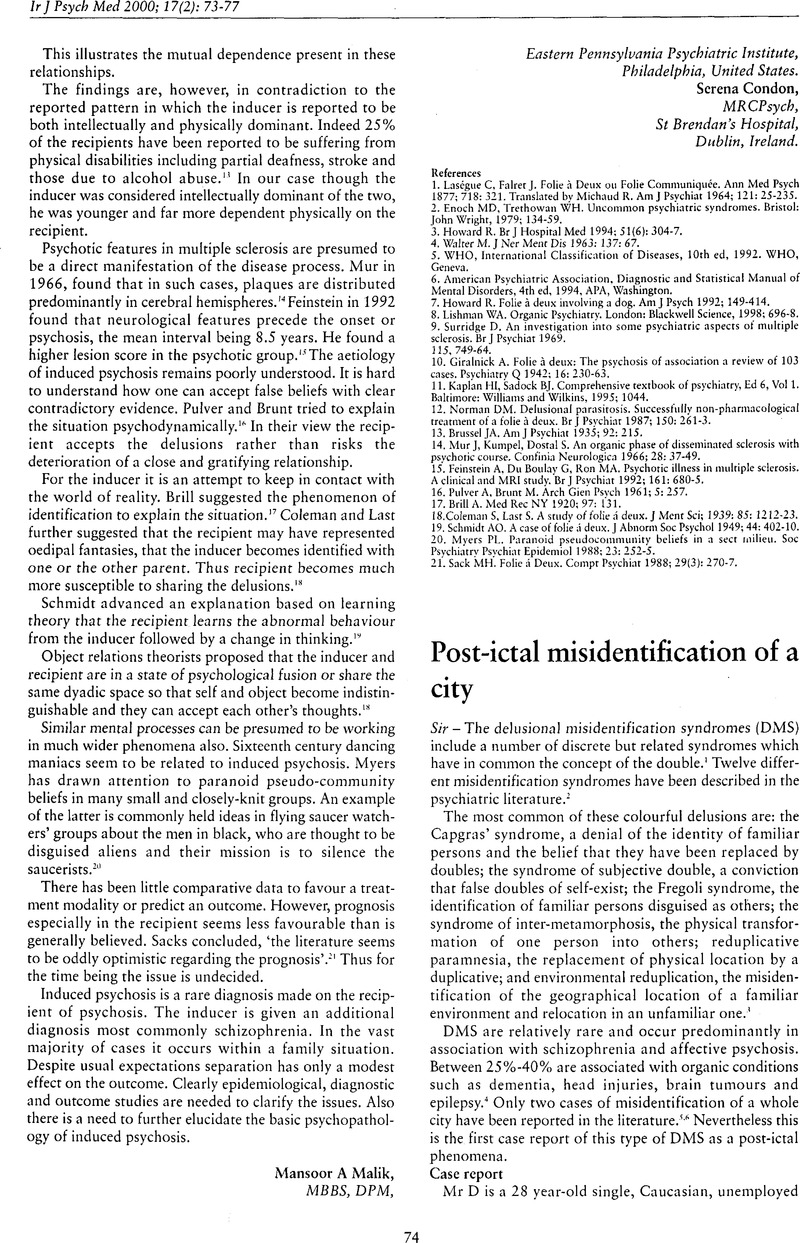Crossref Citations
This article has been cited by the following publications. This list is generated based on data provided by Crossref.
Awara, Mahmoud A.
Moselhy, Hamdy F.
and
Elnenaei, Manal O.
2018.
Late Onset First Episode Psychosis Emerging as Delusional Misidentification of Familiar Sacred Places During a Holy Pilgrimage: A Case Report and Literature Review.
Journal of Religion and Health,
Vol. 57,
Issue. 6,
p.
2224.



